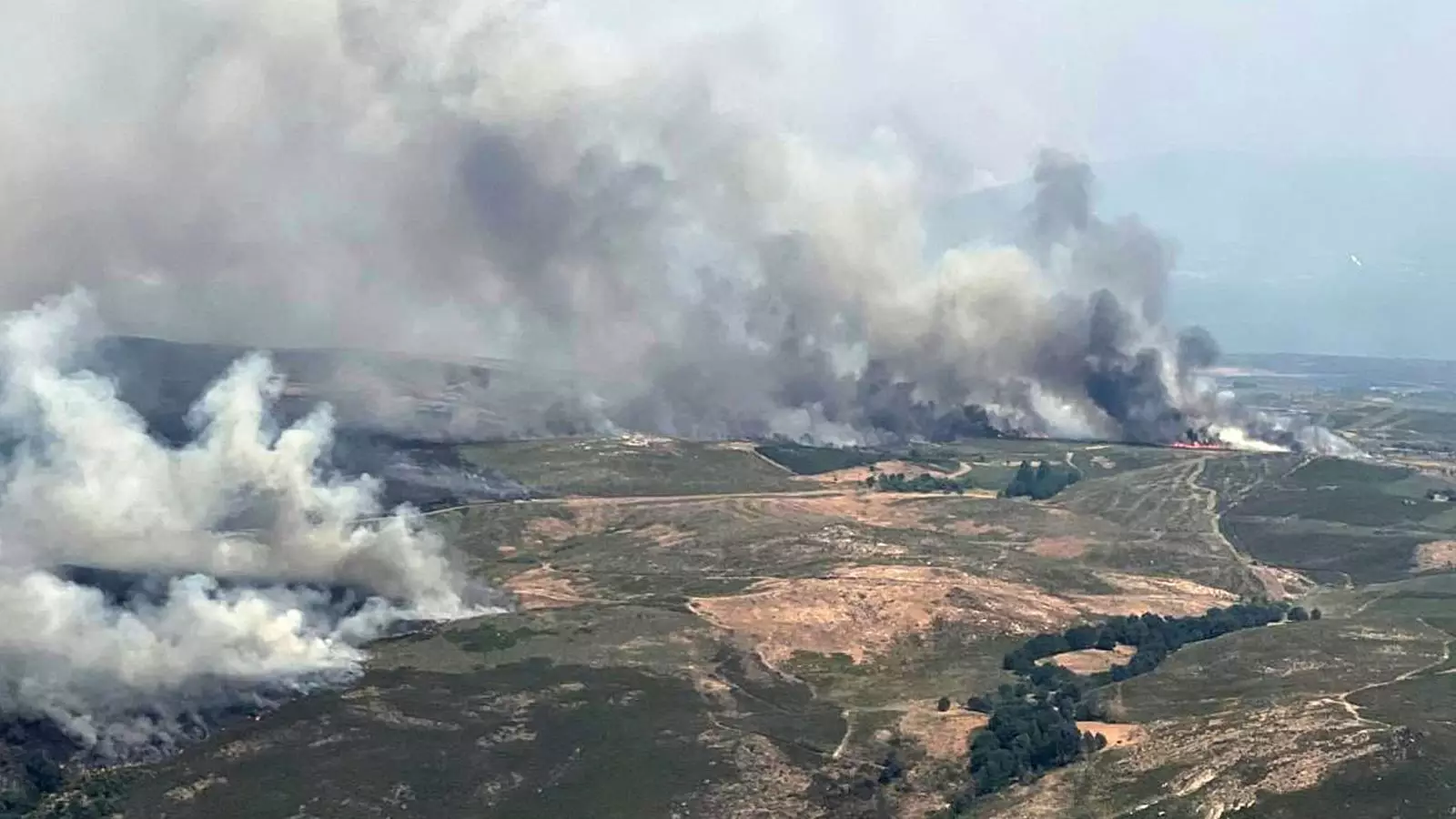The recent influx of smoke from wildfires raging across Spain and Portugal has cast a pall over the UK’s skies, distorting what should be a period of respite from intense summer heat. This event, while superficially a spectacular display of reddened sunsets and hazy horizons, signals an alarming trajectory of climate instability that demands both acknowledgment and action. The smoke particles, infused with Saharan dust and wildfire remnants, are not just a visual curiosity—they symbolize the mounting consequences of our collective neglect of environmental stewardship.
The physics behind the atmospheric phenomena, involving Rayleigh and Mie scattering, illustrate how delicate the atmosphere’s balance truly is. Under normal circumstances, the vibrant colors of dawn and dusk are transient, fleeting thanks to predictable light-scattering processes. Now, however, these processes are amplified and distorted by particles from distant wildfires and dust storms, turning our skies into canvases of unsettling beauty. This spectacle, although mesmerizing, masks a sobering reality—climate change’s fingerprints are indelibly imprinted on our environment, increasingly influencing even regions far from active wildfires.
The presence of smoke in the atmosphere does not pose an immediate threat to air quality, but its persistent and pervasive nature underscores a more insidious concern. The increasing frequency and severity of wildfires in southern Europe—destroying vast swaths of land, claiming lives, and threatening ecosystems—are testament to shifting climatic norms. The connection is clear; rising global temperatures, exacerbated by human activity, are creating perfect conditions for catastrophic wildfires, spiraling out of control in regions historically more temperate. This isn’t just an environmental issue—it’s a reflection of societal failures to address climate change proactively.
Society’s Response: A Call for Greater Responsibility and Action
The forecasting of hazy skies and moderate temperatures in the UK might seem like a benign meteorological matter. Yet, it subtly underscores the broader failure of political and societal institutions to confront the root causes of climate chaos. Policymakers, under pressure from economic interests and short-term gains, often delay meaningful intervention. Meanwhile, communities and individuals are faced with the consequences of these delays—raging wildfires, compromised air quality, and a less predictable climate.
This phenomenon should serve as a wake-up call that the window for effective climate action is rapidly closing. Temporary weather events, like the haze or unseasonal heat, are symptoms of a deeper illness—our planetary system’s destabilization. Reactive measures such as firefighting or weather forecasting are essential but ultimately insufficient. What is urgently needed is a paradigm shift: a societal honest reckoning with our environmental footprint and a collective commitment to reduce fossil fuel dependency, promote sustainable practices, and restore natural ecosystems.
Furthermore, the portrayal of this event as a purely aesthetic spectacle, rather than a warning signal, reflects a troubling societal tendency to normalize or dismiss climate upheaval. The vivid sunsets and colorful skies, while beautiful, should not distract us from the underlying emergency they represent. They are a stark reminder that human actions—driven by greed, ignorance, and political inertia—are intensifying natural disasters. Society must move beyond passive observation toward active engagement: advocating for policies that address climate change, holding corporations accountable for emissions, and fostering a culture of environmental responsibility.
Environmental crises today are no longer distant or isolated; they are intertwined with economic systems, migration patterns, and public health. In the UK and across Europe, this haze should ignite meaningful discourse about our role in fueling the fires abroad and the need to adopt more ethical, sustainable choices. Recognizing that environmental degradation disproportionately affects marginalized communities, we must also view climate resilience as an issue of social justice.
Reflections on Hope and Responsibility
Despite the ominous tone of these developments, society’s ability to respond with innovation, compassion, and resolve remains our most potent asset. We are capable of implementing transformative policies—investing in renewable energy, reforestation, and urban planning that prioritizes resilience. The current atmospheric disturbance should serve as a stark acknowledgment that the climate crisis is no longer a distant threat but an immediate challenge demanding urgent action.
This moment in time calls for humility and responsibility. We must confront the truth that our collective lifestyle choices—fossil fuel consumption, deforestation, and pollution—are directly contributing to the wildfires and hazy skies we see today. It is an ethical imperative that we harness this awareness not as a source of despair but as a catalyst for change. Bystanders and decision-makers alike have a moral duty to redefine progress—not by unending growth on a finite planet but by fostering sustainable coexistence with the natural world.
The atmospheric chaos introduced by wildfires and dust storms is a manifestation of damage done and a harbinger of what could come if inaction persists. Society has the power—and the moral obligation—to redefine its relationship with the environment, ensuring that future generations inherit a world where such haze is a rarity rather than an increasing norm. Engaging critically with these events, rather than dismissing them as mere weather anomalies, is the first step toward meaningful change.


Leave a Reply